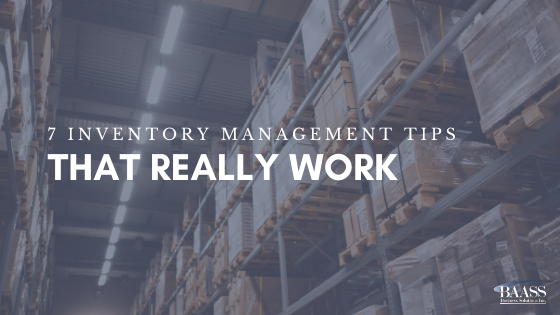Inventory management may not be the most exciting topic in the world, but it can be one of the most important to a business. Without solid inventory management practices, you can lose sales due to out-of-stock notices.
A business that can’t keep popular items in stock and over-orders unpopular items is a business without good control over its cash flow. Good inventory management practices can help you balance investment into your inventory with the need to stay lean.
Inventory Management Best Practices
The following best practices can help you improve your inventory management system.
- Use reports to project inventory levels. Forecasting reports can help you adjust your inventory levels to match predicted sales volumes. This helps you avoid the “feast or famine” syndrome of over- or under- ordering inventory.
- Track current inventory accurately. Use systems such as barcode scanners to track current inventory. Make sure that items on the receiving dock are entered into the inventory system and aren’t just stuffed into bins or packed out onto shelves. Teach your staff to scan all items as they move into and out of inventory to ensure that items are tracked accurately.
- Prioritize purchases: Prioritize orders of new stock around what is selling briskly or seasonal items for upcoming seasons. Focus your time and money on items that are in highest demand.
- Ditch the spreadsheets: With so many affordable software options, it’s hard to imagine why you might keep using spreadsheets. Spreadsheets require manual data entry, do not synchronize easily with other systems, and require a lot of time to manipulate and use. Newer, automated systems can make inventory tracking so much easier and efficient.
- Avoid spoilage: If you manage items that can spoil such as ingredients, food products, chemicals, pharmaceutical inventory, or other items with a dated shelf life, be sure to use FIFO (first in, first out) inventory methods. Keep careful track of the expiration dates on your items to avoid spoilage.
- Plan for emergencies: While your goal is to keep inventory levels at the right levels, there are going to be times when demand outstrips supply. Plan for emergencies. Line up extra suppliers now and budget for rush shipping charges, if necessary, to accommodate customer.
- Conduct regular audits: Audit your inventory and reconcile records to actual inventory quarterly. The more frequently you audit your inventory, the better you will get at managing it for maximum efficiency.
Excess inventory represents poor business management. It’s money spent on items that rarely, if ever, recoup their value if they remain unsold for any length of time. By improving your inventory management practices, you’ll get a better handle on your cash flow while ensuring an adequate supply of items to fulfill customer orders.
What is the Inventory System? Why is it Important?
Interested in learning more? Check out this free whitepaper from Sage.
BAASS Business Solutions
BAASS Business Solutions offers warehouse solutions and software for manufacturers to improve productivity, business insights, and data management. Please contact us for a consultation today. We will help you choose the best business intelligence solution for your needs. Contact us or call 1-888-650-5544.


